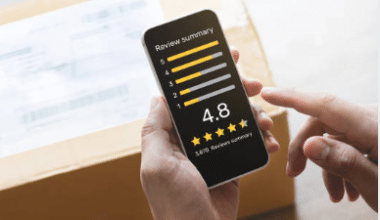When we talk about effective PR strategies, a couple come to mind, but few are as illustrative as LEGO’s “Everyone is Awesome” set. This special edition product, coupled with a built-in PR strategy, conveys a clear message of representation for the LGBTQIA+ community.
Launched in tandem with the 2021 LGBT Pride Month, the set incorporates the colors of the pride flag and transgender pride flag, alongside black and brown to represent the diversity of races and ethnicities within the community. Even those who aren’t gay can still identify with this, as it covers all aspects of diversity and inclusion. Also, having Matthew Ashton, Vice President of Design at the LEGO Group, share his coming out experience and insights from growing up as a gay teen adds authenticity and relatability to the entire “Everyone is Awesome” campaign.
What all of this means is that a well-considered PR strategy should complement the brand’s values and existing messaging in a manner that reinforces the narrative.
Key Takeaways
- Public relations (PR) is the practice of employing strategic communication to nurture a favorable public image and reputation for a brand or business.
- PR strategies are the collection of methods an organization uses to help it move from its current situation to its end goal. They are similar to marketing strategies because the primary goal is to spread brand awareness.
- PR strategies evaluate everything surrounding the crisis management process and help campaigns run smoother.
- Having a PR strategy provides a goal, helps you stay on track to achieve it, and ensures you know how to achieve it.
- A PR strategy will help you establish the kind of content you’ll be releasing and what media outlets will be best for spreading that content.
- A good PR strategy can help your company increase its reputation if you overcome a negative situation.
What Is Public Relations?
Public relations (PR) is the practice of employing strategic communication to nurture a favorable public image and reputation for a brand or business. As P.T. Barnum once said, “There’s no such thing as bad publicity.” With this, one could argue that an unfavorable public perception is better than zero brand awareness.
Effective public relations crafts a clear narrative for your brand and business. It aids the public in understanding and giving them the chance to like your brand, providing them with a reason to trust you enough to invest in your products and services.
A 2021 report by the Pew Research Center indicates that 56% of Australian adults trust national news media, while 75% trust their local news organizations. In contrast, only 27% trust information on social media. This underscores that news coverage by official media channels remains the primary source of reliable information for the Australian public.
In other words, generating significant media publicity through effective public relations is still crucial for ensuring your brand is visible and memorable to the general public.
What are Public Relations (PR) Strategies?
PR strategies are the collection of methods an organization uses to help it move from its current situation to its end goal, which can include gaining publicity, growing its customer base or improving its reputation. These methods help a company organize its public relations efforts to attract its target audience and identify ways to reach its goals during the planning stage.
PR strategies are similar to marketing strategies because the primary goal is to spread brand awareness. They can also be useful in crisis management situations because they allow organizations to respond to a negative situation and try to develop a possible outcome from it.
Businesses often rely on outlets, such as media sources, blogs, social media or podcasts, to help them deliver messages for these strategies to a wider audience. PR professionals group these into three categories, which are:
Owned media
This remains the go-to for any business, offering complete control over the content on owned media channels. Examples encompass your website copy, social media and blog content, email newsletters, and any other promotional materials. Essentially, any media where you possess the rights.
Paid media
Advertising serves as a valuable means to enhance the visibility of your owned media. This includes avenues like social media advertising, influencer marketing, and pay-per-click (PPC) advertising. While organic marketing through SEO is indispensable for owned media in the long term, paid media is instrumental for building brand awareness in the short term.
Earned media
Regarded as the most valuable and potent form of exposure for any brand, earned media is also the most challenging to attain. Examples encompass media coverage, customer reviews, mentions, and endorsements by customers on social media, as well as prominence in search results. A successful PR strategy, working hand in hand with a meticulously planned marketing strategy, is imperative to secure earned media.
For optimal outcomes, your PR strategy should leverage both owned and paid media, striving to maximise exposure through earned media – akin to the impact of word-of-mouth marketing.
Elements of a PR Strategy
A PR strategy typically includes:
- Goal Setting. Defining clear objectives and outcomes that align with the overall organizational or personal goals.
- Audience Identification. Understanding the target audience(s) and their preferences, interests, and concerns to tailor messages effectively.
- Message Development. Crafting key messages that convey the desired narrative or information to be communicated.
- Media Relations. Engaging with journalists, bloggers, and other media outlets to secure positive coverage and manage any potential negative stories.
- Content Creation. Developing compelling content such as press releases, articles, blog posts, social media content, and multimedia materials.
- Crisis Management. Preparing for and managing potential crises or negative situations that could impact the reputation of the individual or organization.
- Monitoring and Measurement. Tracking and evaluating the effectiveness of PR efforts through metrics like media mentions, sentiment analysis, and audience engagement.
- Adaptation and Improvement. Continuously refining the PR strategy based on feedback, results, and changes in the environment to ensure ongoing effectiveness.
Types of PR campaigns
There are several types of PR campaigns, and all of them can be utilized for specific goals. These include:
Crisis management
While every business hopes to avoid a crisis management PR campaign, they’re also one of the most popular and common strategies. In a crisis management PR campaign, your organization works to change public perception of a potentially damaging situation that opposes a threat to your reputation.
Product launch
Another popular PR campaign type is the product or service launch. For bringing a new product to market, a product launch PR campaign helps generate positive media coverage, create social media buzz, and catch consumers’ attention. Ideally, about six months out from product launches, your business starts crafting key messaging, press releases, collateral, and visual imagery.
PR teams might reach out to the media for exclusive opportunities or popular influencers in the space to promote the new product.
Corporate messaging
Another popular type of public relations campaign is the corporate messaging push. For key brand values and narratives, your organization might want to launch a campaign sharing that vision with different communities.
Best PR Strategies
In today’s competitive marketing landscape, having a comprehensive PR strategy is essential for establishing a positive company image, connecting with your target audience, and standing out in the market.
Follow these 13 effective PR strategies to elevate your brand’s reputation, build trust, and achieve long-term success:
Best PR Strategies.pdf
Strategies For Creating a PR Campaign
PR campaigns take several months to plan and execute, so it’s important to follow a step-by-step process for creating a well-executed campaign from start to finish.
Set campaign goals
First, it’s important to set PR campaign goals. These can be anything from medium mentions to website traffic to sales or increased brand reputation.
Some metrics might be harder to measure than others, and you’ll want to analyze a handful of top-of-funnel metrics like awareness or impressions and bottom-funnel metrics like sales or conversions.
Research and understand your target audience
Before creating any messaging or deliverables, research and deeply understand your target audience. Depending on whether you’re running the campaign to the media, customers, strategic partners, or your local community, it’s critical to understand the demographics and psychographics of your audience. Audience demographics will include gender, age, location, household income, or job, and psychographics will include details on purchasing behavior, interests, media preferences, and more.
You can obtain this information by looking at customer data in your customer relationship management (CRM) system, performing market research surveys, or pulling your audience on social media.
Craft your message
Once you know your PR campaign goals and how your target audience will respond, it’s time to craft your message. A PR campaign should inform, persuade, or entertain, and depending on your goal, you’ll want to create key messaging that shares your brand story.
Choose your PR tactics
Now that your message is finalized, choose how you’ll distribute your narrative. If you have a budget, you might explore paid ads on social media or in key publications. Without a budget, you might focus on your organic channels, like your company website and blog.
You can also explore pitching to the media and starting to build relationships with reporters in your industry to see if your PR campaign is something they would want to cover. Research shows that a PR-earned media strategy should be integrated with a brand’s content marketing efforts to maximize brand impact.
Consider how your PR campaign will integrate with the marketing your brand is already doing.
Choose the channel or platform
There are four primary PR mediums: traditional media, community relationships, owned media, and social media. A well-executed PR campaign utilizes a combination of all channels and platforms to create a distributed message strategy.
For example, for a product launch, you might want to announce the new product on your own media and social media but have influential community relationships boost and amplify your news. Then, offer an interview or quote to a media reporter who can include your business’s new product in an upcoming article.
All of these PR tactics work together to amplify your message.
Measure results
A PR campaign might last several weeks or months, and media monitoring software can help keep track of results and buzz in real-time. Keep in mind the existing goals you established at the beginning, and assess whether you saw an uptick in media mentions, impressions, social media engagement, website traffic, or whatever you were tracking.
Measuring results allows you to refine and polish your messaging and distribution strategy for future PR campaigns.
Importance of PR Strategies

Cement trust in your brand
Your strategy will dictate how your brand approaches public debates and discussions trending within your industry.
Thought leadership is an excellent example of this, as a name and a face get attached to your brand, making the brand more human. You will gain the trust of your target audience, who will start seeing the potential of your work and values.
The more you speak up, leaning on your expertise and industry knowledge, the more likely it is to build credibility and authority within your industry.
Generate leads and sales
Generating income is typically a focus of the marketing team. However, launching a PR campaign will inevitably contribute to increased interest in your brand. Ideally, a PR campaign will generate more publicity, sales, or leads.
Boost brand awareness
This is one of the most important aspects of a PR strategy. Brand awareness emerges (positive or negative) as the public starts to recognize and learn about your brand, its values, and how the organization contributes to innovation within its industry.
Crisis management
A solid PR strategy foresees potential dangers to your image. Adverse events can always happen. It’s wise to be prepared to tackle those situations, which is exactly what a PR strategy can help with. Preparing for such an eventuality and creating effective statements and messaging to combat this is an essential practice.
While it is not possible to eliminate the possibility of negative PR, it is possible to prepare for counter-action should it occur.
Media Relations
Launching a PR campaign means engaging with journalists and media outlets. This way, it is more appealing to the outlets that matter the most, and it increases your chances of forming a long-term relationship with that journalist that will benefit both of you in the future.
Attract Investors
Having a thought-out PR strategy will ensure that your brand gets the timing right to get the most attention paid to what you want to share. Whether it’s a milestone, a successful funding round, a breakthrough, an innovation, an idea, or just a story of your brand, the more attention and better timing you have, the more investors will likely be attracted to your brand.
This can secure the trust of people who see the potential of your product or service.
Grab the attention of the experts
Industry experts will be watching your successes and mistakes. The strategy you use can work in your favor by ensuring that the experts become advocates, especially those who are attracted to your business and who resonate with your values, beliefs, and ideas.
This can prove invaluable but requires a PR strategy that provides the best timing and positioning.
Measure your success
You will need specific measurements and metrics in place throughout your campaign to know how well you’re doing and to get an overall measure of the success of your campaign.
Therefore, a PR strategy is necessary to establish this criterion and have a clear and concise overview of your campaign’s main objectives and secondary goals and aims. Often, it is important to use media monitoring tools to keep track of statistics relating to your online presence, activity, and web traffic from target audiences.
Examples of Successful PR Campaign Strategies
The best PR campaigns are highly memorable, so let’s take a look at several PR campaign examples below that you might be familiar with.
Apple’s product launch
A popular example of product launch campaigns is Apple’s annual launches of new iPhone models, Mac products, and more. Apple is known for its splashy launch events, dramatically unveiling innovative products like the Vision Pro virtual reality headset.
BP’s crisis management campaign
In 2010, BP’s offshore drilling unit exploded and sank in the Gulf of Mexico, causing the largest marine oil spill in history and killing and injuring several people. Not only was it a natural disaster, but it was an incredibly damaging reputational situation for BP post-oil spill.
BP launched a PR campaign to repair the company’s image. This campaign included paid advertisement, community relationship building through grants, and more.
Recommended Articles
- CRISIS COMMUNICATION: Definition and Best Strategies
- THE ULTIMATE GUIDE TO OWNED MEDIA: Best Strategies & Examples
- Best PR Firms: Discovering the Powerhouses Behind Brand Success
- MEDIUMS OF COMMUNICATION: Types and Examples






